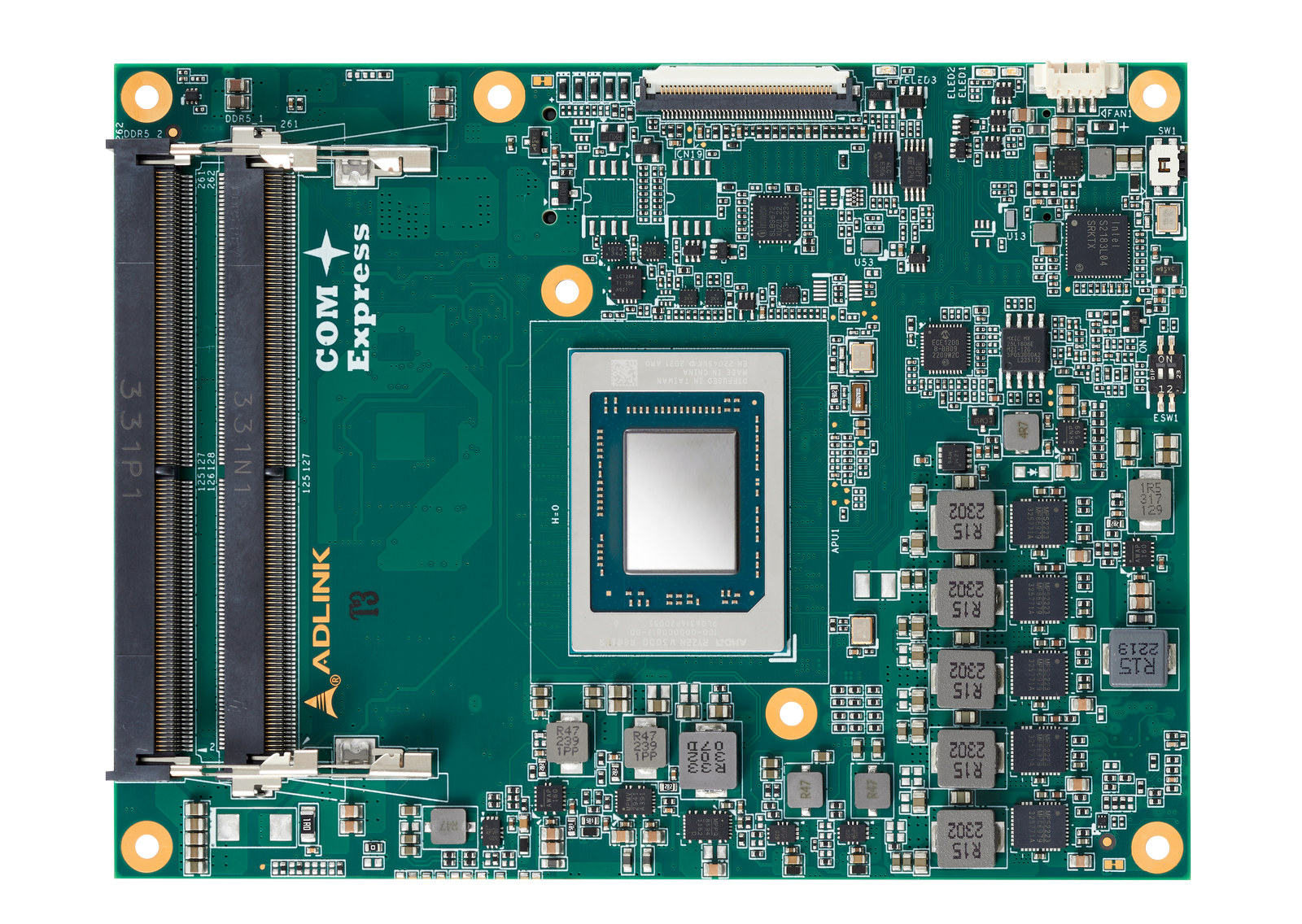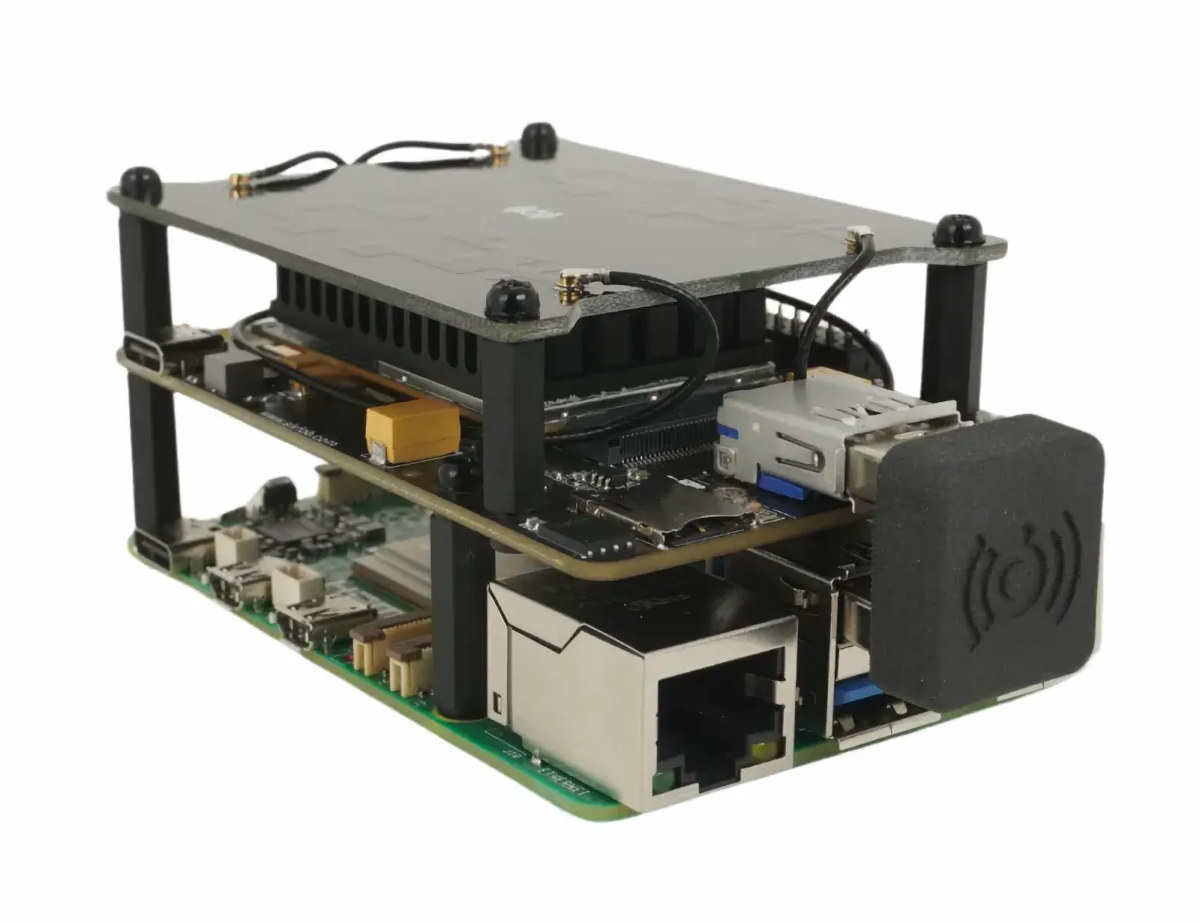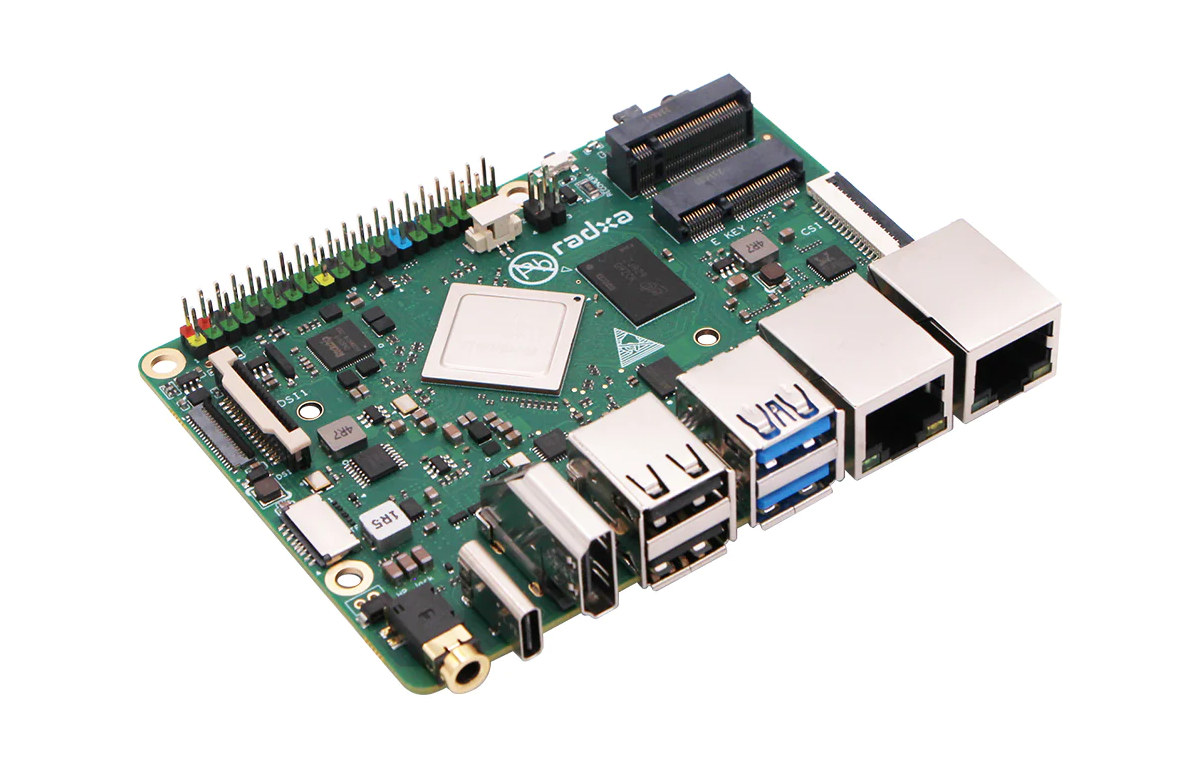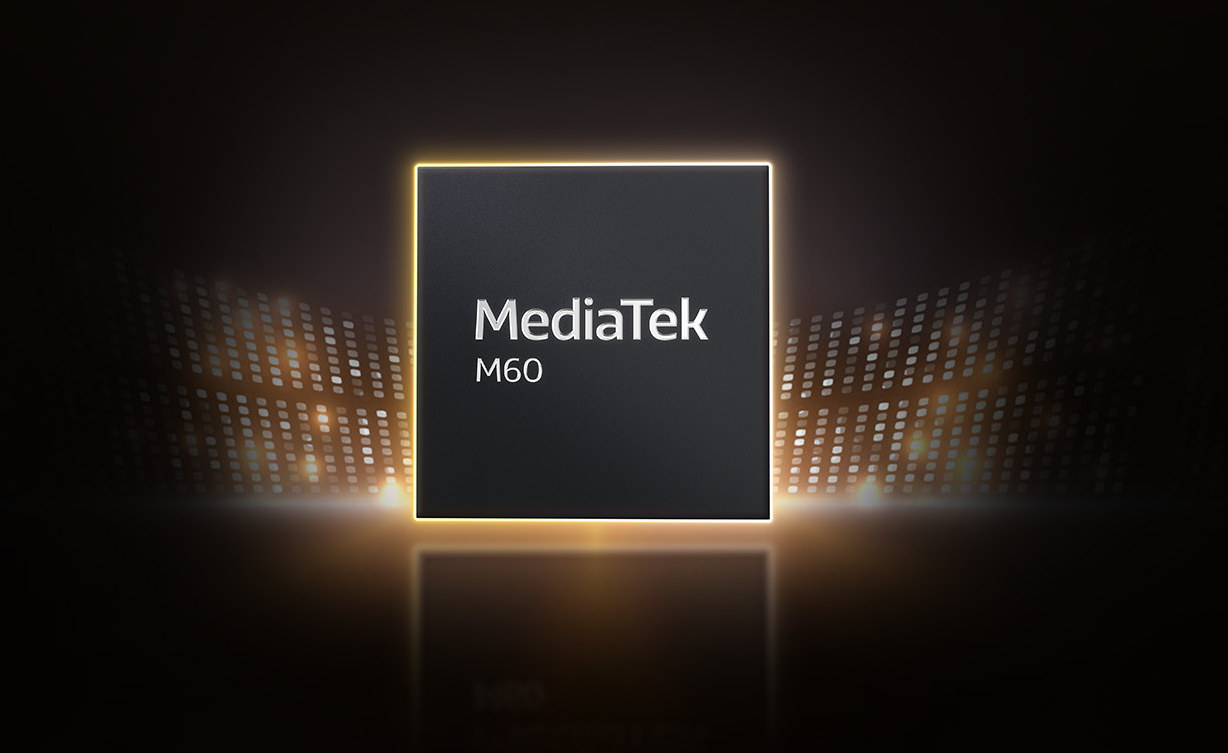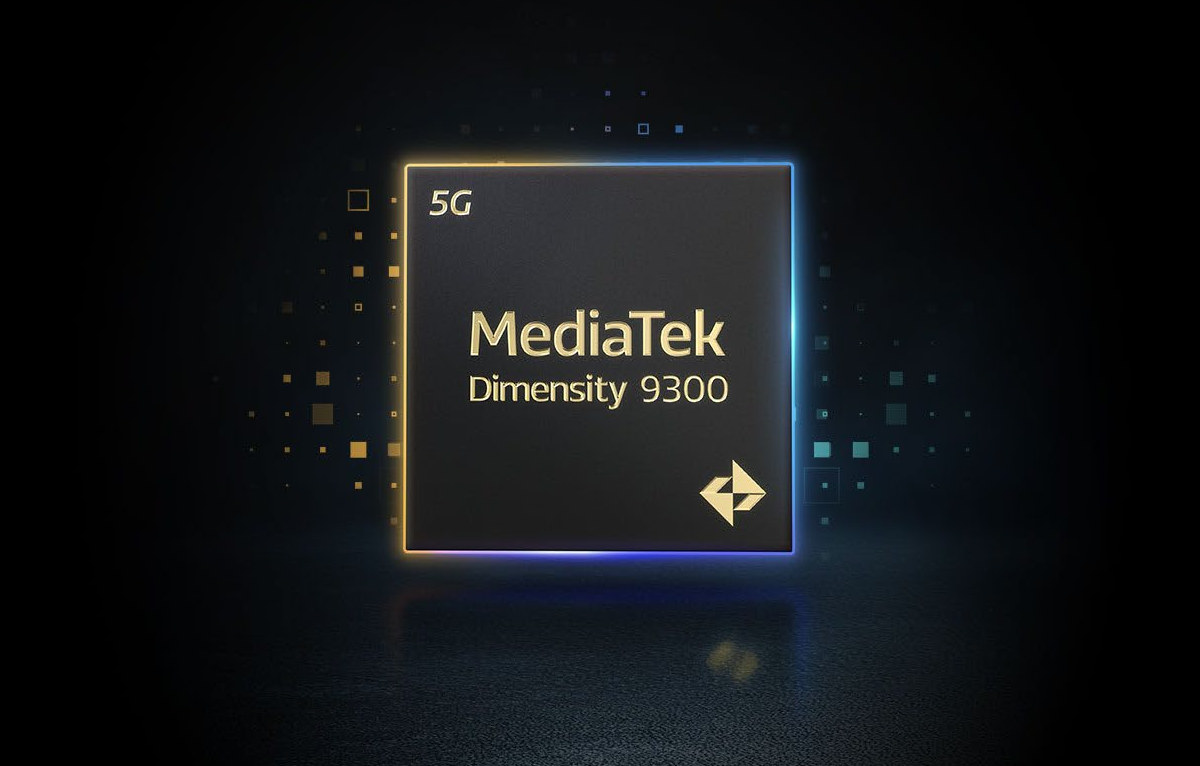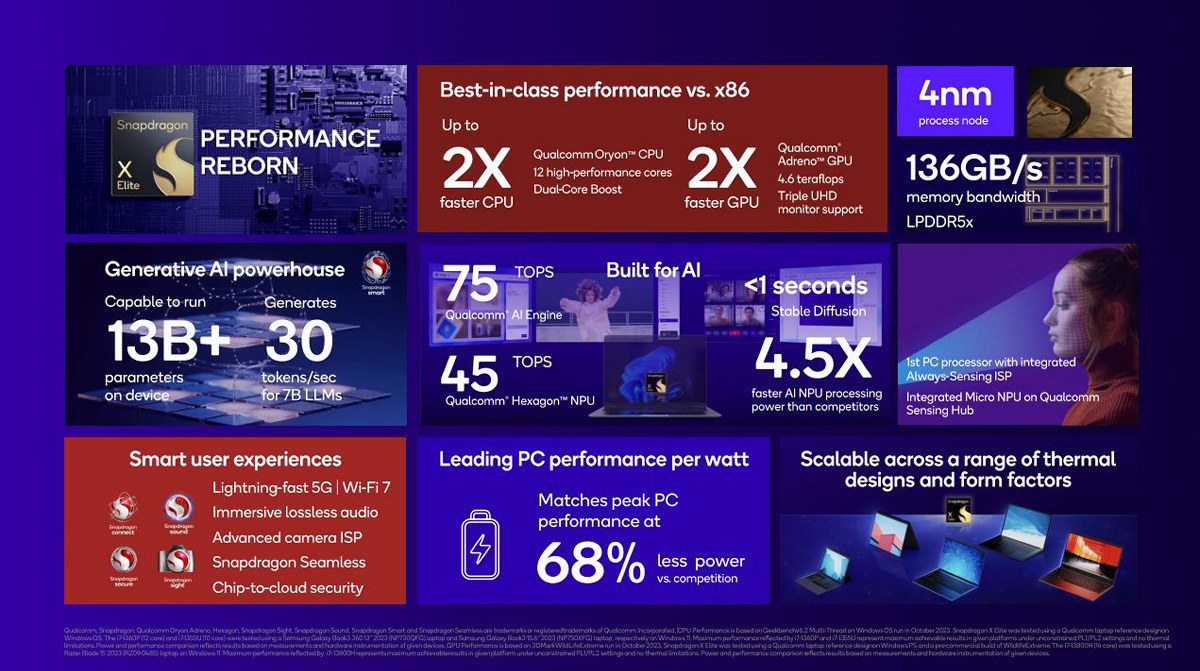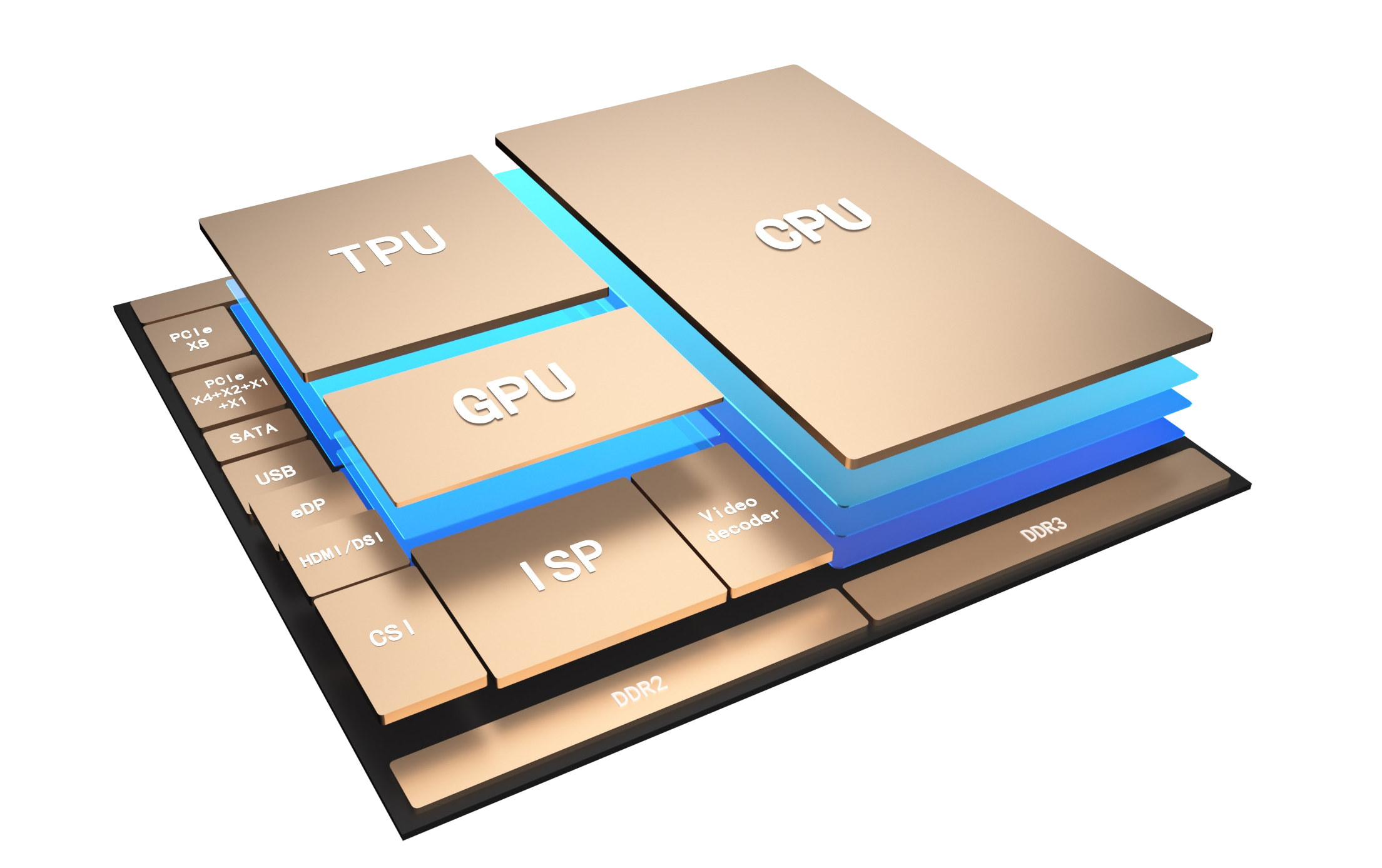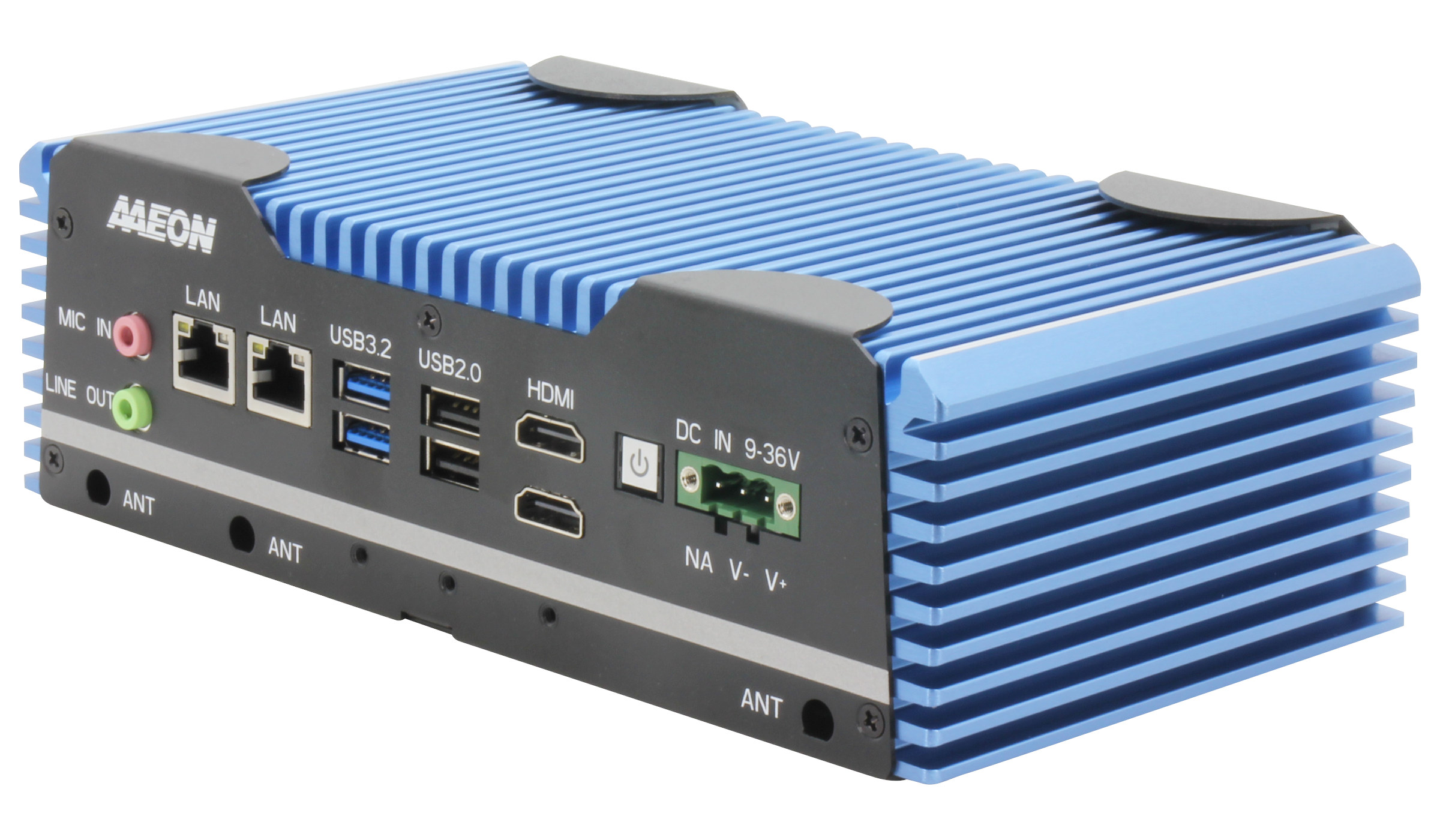ADLINK Express VR7 is a COM Express Basic size Type 7 computer-on-module powered by the eight-core AMD Ryzen Embedded V3000 processor with two 10GbE interfaces, fourteen PCIe Gen 4 lanes, and optional support for the “extreme temperature range” between -40°C and 85°C. The COM Express module supports up to 64GB dual-channel DDR5 SO-DIMM (ECC/non-ECC) memory and targets headless embedded applications such as edge networking equipment, 5G infrastructure at the edge, video storage analytics, intelligent surveillance, industrial automation and control, and rugged edge servers. Express-VR7 specifications: SoC – AMD Embedded Ryzen V3000 (one or the other Ryzen V3C48 8-core/16-thread processor @ 3.3/3.8GHz; TDP: 45W Ryzen V3C44 4-core/8-thread processor @ 3.5/3.8GHz; TDP: 45W Ryzen V3C18I 8-core/16-thread processor 1.9/3.8GHz; TDP: 15W (useful in the extreme temperature range) Ryzen V3C16 6-core/12-thread processor 2.0/3.8GHz; TDP: 15W Ryzen V3C14 4-core/8-thread processor 2.3/3.8GHz; TDP: 15W System Memory – Up to 64GB (2x 32GB) dual-channel ECC/non-ECC DDR5 memory […]
Raspberry Pi 5 gets 5G Modem HAT based on Quectel RM502Q-AE M.2 module
Sixfab has just launched a 5G Modem Kit for Raspberry Pi 5 with a Raspberry Pi HAT that takes Quectel RM502Q-AE 5G Sub-6GHz M.2 module working globally (except China), a “patent-pending” internal antenna for Sub-6 frequency bands designed by SixFab, and a USB 3.0 bridge connector. SixFab 5G modem Kit for Raspberry Pi 5 highlights: Sixfab 5G Modem HAT for Raspberry Pi 5 M.2 socket for 5G module Nano SIM card holder + embedded SIM USB 3.0 port and 40-pin GPIO header for connection to the Raspberry Pi 5 SBC Misc User button Status, power, and user (GPIO21) LEDs EEPROM for Raspberry Pi HAT compliance 2-pin fan connector Power Supply – 5V via USB Type-C port (on HAT itself) Dimensions – 88.1 x 57.7 x 21.7 mm Approvals – FCC, IC, CE, UKCA are in progress Quectel RM502Q-AE M.2 module 5G NR: 3GPP Release 15 NSA/SA operation, Sub-6 GHz LTE […]
Radxa ROCK 3B Rockchip RK3568 SBC combines Pico-ITX and Raspberry Pi form factors
Radxa ROCK 3 Model B, or ROCK 3B for shorts, is a “PI-CO ITX” SBC powered by a Rockchip RK3568 SoC that combines the benefits of Pico-ITX and Raspberry Pi form factors in the sense that the 100x72mm board features all main ports on the rear side and supports expansion through a 40-pin Raspberry Pi-compatible GPIO header and several M.2 sockets for storage and wireless modules. The ROCK 3B is the younger, but bigger brother of the ROCK 3A business card-sized SBC introduced in 2021, still with an RK3568 CPU and up to 8GB LPDDR4, but the board features two gigabit Ethernet ports, an M.2 B Key socket for 4G LTE/5G cellular modules, an M.2 PCIe 3.0 x1 socket for an M.2 2280 SSD not necessitating an expansion board, besides the M.2 Key-E socket for WiFi 6. ROCK 3B specifications: SoC – Rockchip RK3568(J) CPU – Quad-core Cortex A55 processor […]
MediaTek unveils 5G RedCap solutions: M60 5G modem and T300 Arm Cortex-A35 SoC
MediaTek has introduced its first 5G RedCap solutions with the M60 5G modem and the MediaTek T300 Arm Cortex-A35 SoC design to bring 5G-NR to wearables, light-weight AR devices, IoT modules, and consumer and industrial Edge AI devices. 5G RedCap (Reduced Capability), part of 3GPP Release 17, aims to keep some 5G features such as low latency, low power consumption, enhanced security, and network slicing while limiting the bandwidth (to around 85 Mbps) in order to be used in IoT devices and products that may not need the bandwidth required by smartphones and computers, but would benefit from longer battery life and a smaller footprint. MediaTek claims to be the first company to unveil 5G RedCap chips with the M60 modem and T300 SoC. MediaTek M60 key features and specifications: 3GPP Release 17 standard 5G modem R17 UE power saving R17 Coverage enhancement R17 Small data transmission LTE & NR-FR1 […]
MediaTek drops efficiency cores in Dimensity 9300 Cortex-X4/A720 mobile SoC
MediaTek Dimensity 9300 is a premium octa-core 5G mobile SoC with two clusters of four Cortex-X4 cores and four Cortex-A720 cores, but doing without any Cortex-A520 efficiency core, plus the latest Arm Mali-G720 GPU, and a MediaTek APU 790 neural processing unit (NPU) capable of support generative AI and large language models (LLM) with up to 33 billion parameters. Arm invented big.LITTLE and then DynamIQ technologies in order to mix cores with different power efficiency and performance characteristics in order to improve power consumption. Their latest launches included the Cortex-X4 premium core, Cortex-A720 performance/big core, and Cortex-A520 efficient/LITTLE core, but MediaTek decided to do without the Cortex-A520 in the Dimensity 9300 which strikes me as odd for a mobile SoC where power efficiency is important for a long battery life. MediaTek Dimensity 9300 specifications: Octa-core CPU with DynamIQ 4x Arm Cortex-X4 at up to 3.25GHz 4x Arm Cortex-A720 up to […]
Qualcomm Snapdragon X Elite – A 4.3 GHz 12-core Arm AI processor for next gen PCs and laptops
Qualcomm has now provided Arm chips for mobile PCs (aka laptops) for several years, but apart from a 20-hour battery life, the performance and price of Snapdragon laptops have often been disappointing. The Snapdragon X Elite aims to change that at least on the performance front. The new Qualcomm 12-core 64-bit Arm processor is clocked at up to 3.8 GHz boosting to up to 4.3 GHz, and is said to deliver up to twice the CPU performance against the competition (Intel/AMD/Apple) or provides the same level of performance at a third of the power consumption. The SoC will also be able to run on-device generative AI with over 13B parameters thanks to 75 TOPS of AI performance and support the latest wireless connectivity technologies such as 5G and WiFi 7 through external chips from the company. Qualcomm Snapdragon X Elite specifications: CPU – 12-core 64-bit Armv8 Oryon processor clocked at […]
Sophgo SG2380 – A 2.5 GHz 16-core SiFive P670 RISC-V processor with a 20 TOPS AI accelerator
Sophgo SG2380 is an upcoming 2.5 GHz 16-core RISC-V processor based on SiFive Performance P670 cores and also equipped with a 20 TOPS AI accelerator using SiFive Intelligence X280 and Sophgo TPU that will find its way into a $120 desktop-class mini-ITX motherboard in H2 2024. The RISC-V processor also supports up to 64GB RAM, as well as UFS 3.2 and SATA 3.0 storage, comes with an Imagination GPU for 3D graphics and a VPU capable of 4Kp60 H.265, H.264, AV1, and VP9 video decoding, plenty of interfaces, and the system can manage locally deployed larger-scale LLMs like LLaMA-65B without the need for external NVIDIA or AMD accelerator cards. Sophgo SG2380 RISC-V SoC Sophgo SG2380 specifications: CPU 16-core SiFive P670 (RV64GCVH) 64-bit RISC-V processor @ up to 2.5GHz with RISC-V Vector v1.0, Vector Crypto Cluster configuration – 12x 2.5 GHz performance cores, 4x 1.6 GHz efficiency cores Full RISC-V RVA22 […]
Rugged fanless Alder Lake-N mini PC features 6x RS232/422/485 ports, dual 2.5GbE, dual HDMI
We’ve covered many Alder Lake-N mini PCs, but the AAEON BOXER-6617-ADN is a little different as a robust, fanless industrial embedded PC with up to six RS232/RS422/RS485 serial ports, two 2.5GbE ports, and two HDMI video outputs. Powered by up to an Intel Core i3-N305, the latest mini PC from AAEON works in a -20°C to 70°C temperature range and supports 9V to 36V DC input with circuit protection suitable for industrial environments like the previously announced BOXER-6406-ADN fanless embedded computer from the company, but with a slightly different feature set. BOXER-6617-ADN specifications: Alder Lake-N SoC (one or the other) Intel Atom x7211E dual-core processor up to 3.2 GHz with 6MB cache, 16EU Intel UHD Graphics; 6W TDP Intel Processor N50 dual-core processor up to 3.4 GHz with 6MB cache, 16EU Intel UHD Graphics; TDP: 6W Intel Processor N97 quad-core processor up to 3.6 GHz with 6MB cache, 24EU Intel […]


